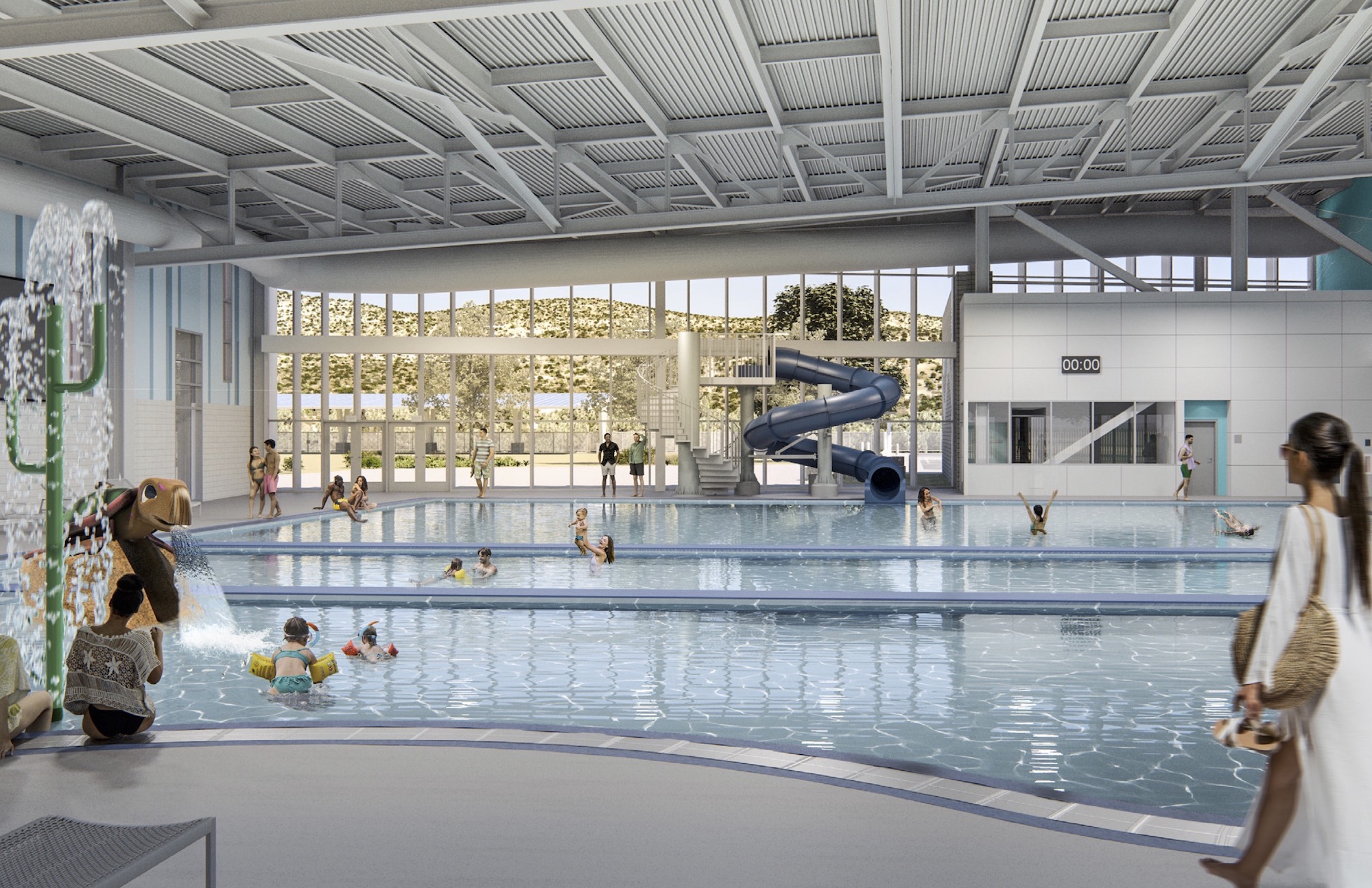Note: This blog post recaps some of the findings from HMC's "Aquatic Centers: Bringing Life to Communities" report. Download the free report (short registration required).
Decreased risk of chronic illness. Improved health for people with diabetes and heart disease. Boosted mood and mental health.
According to the Centers for Disease Control and Prevention (CDC), swimming and water-based exercise can benefit everyone and are among the most popular fitness activities in the U.S.
But for many without access to natural water or a swimming pool, water fitness is a luxury only enjoyed by members of private clubs. Even in California, with miles of dreamy coastline, a Mediterranean climate, and swaying palm trees, access to water-based recreation, swim lessons, and health and wellness benefits are just a fantasy to many across the state.
WORKING TOWARD WELLNESS EQUITY
According to the National Institutes of Health, health equity is the state in which everyone can attain full health potential, and no one is disadvantaged from achieving this potential because of social position or any other socially defined circumstance.
Community aquatic facilities are vital in filling this gap and creating a more equitable future for people in diverse neighborhoods where significant space, economic, or climate challenges limit swimming pool access.
Investing in new facilities that nurture public health and well-being seems like a given. After all, the scientific community has clearly established the benefits of physical activity for educational outcomes and illness prevention. Public aquatic facilities provide multi-generational benefits in health, wellness, water safety training, and recreational access.
BREATHING LIFE INTO THE COMMUNITY
Public aquatic programs support and benefit the communities that host them in a myriad of ways:
1. These programs provide multigenerational health and wellness offerings to the community (swim lessons, summer camps, serving as cooling centers, senior fitness/water aerobics classes, and swimming as fitness training).
2. Water safety programs help save lives. According to the CDC, there are strong racial and economic disparities in access to these programs and the risk of death by drowning. Creating more public facilities can help address disparities in private aquatics availability and improve access equity.
3. Aquatics programs allow the community to come together for play, competition, fitness and learning at all ages.
4. Community swim programs at educational facilities create a stronger relationship with the host community, increasing access, public engagement, and recruitment into higher education opportunities.
BENEFITS OF THOUGHTFUL DESIGN FOR AQUATICS CENTERS
A well-considered design can mitigate many hurdles to creating these facilities in more challenging locations and climates:
1. A thoughtful approach can establish a deeply contextual relationship between the facility’s architecture and the community that considers it a part of their home, raise public awareness and engagement, and elevate public aquatics programs to become a source of civic pride.
2. Creating an experience that feels like it belongs in your neighborhood is the key to a durable and successful facility.
3. Every location is unique. Next-door neighbors, historical relationships, climatic conditions, and economic factors all shape a truly contextual design.
4. Connection to context creates a facility that enhances the community rather than being seen as a nuisance (overcoming NIMBYism). Your facility should speak to who you are and feel a part of the landscape and town in which it resides.
5. One size does not fit all. Some facilities may require an iconic presence in the landscape, others may respond to adjacent architectural precedents, and others may need to be discrete members of a quiet neighborhood. Often one project may need to do all these things, depending on which side of the site you are approaching from.
6. An indoor natatorium may make more sense in some locations by allowing greatly extended operating hours and seasons (Remember: not all of California is a coastal community).
Note: This blog post recaps some of the findings from HMC's "Aquatic Centers: Bringing Life to Communities" report. Download the free report (short registration required).
More from Author
HMC Architects | May 30, 2024
Inclusive design strategies to transform learning spaces
Students with disabilities and those experiencing mental health and behavioral conditions represent a group of the most vulnerable students at risk for failing to connect educationally and socially. Educators and school districts are struggling to accommodate all of these nuanced and, at times, overlapping conditions.
HMC Architects | Apr 29, 2024
Tomorrow's classrooms: Designing schools for the digital age
In a world where technology’s rapid pace has reshaped how we live, work, and communicate, it should be no surprise that it’s also changing the PreK-12 education landscape.
HMC Architects | Mar 26, 2024
Safeguarding our schools: Strategies to protect students and keep campuses safe
HMC Architects' PreK-12 Principal in Charge, Sherry Sajadpour, shares insights from school security experts and advisors on PreK-12 design strategies.
HMC Architects | Jul 25, 2023
The latest 'five in focus' healthcare interior design trends
HMC Architects’ Five in Focus blog series explores the latest trends, ideas, and innovations shaping the future of healthcare design.
HMC Architects | Jun 26, 2023
Addition by subtraction: The value of open space on higher education campuses
Creating a meaningful academic and student life experience on university and college campuses does not always mean adding a new building. A new or resurrected campus quad, recreational fields, gardens, and other greenspaces can tie a campus together, writes Sean Rosebrugh, AIA, LEED AP, HMC Architects' Higher Education Practice Leader.
HMC Architects | Apr 13, 2023
Creating a sense of place with multipurpose K-12 school buildings
Multipurpose buildings serve multiple program and functional requirements. The issue with many of these spaces is that they tend not to do any one thing well.
HMC Architects | Jun 2, 2022
Women in Architecture: How HMC Pioneers Gender Equality
A survey by the Association of Collegiate Schools of Architecture (ACSA) shows that while women account for nearly half of graduates from architecture programs, they only make up about 15 percent of licensed architects.
HMC Architects | Jan 20, 2020
Robotics in architecture and construction: An industry shift
Architects who embrace this intriguing and dynamic technology now will be better equipped to design the most efficient buildings of the future.
HMC Architects | Jul 30, 2019
What is the future of architecture as a profession?
With the rapid evolution of available technologies, and the integration of them into the profession, the role of an architect is changing faster than it ever has before.
















